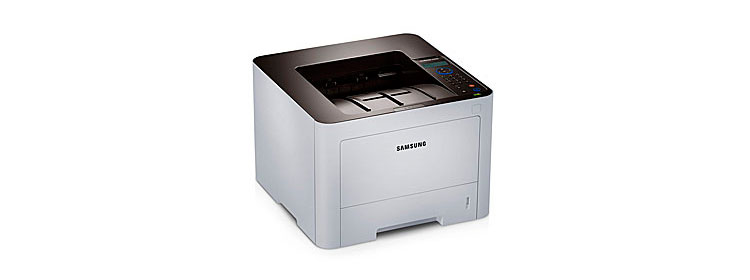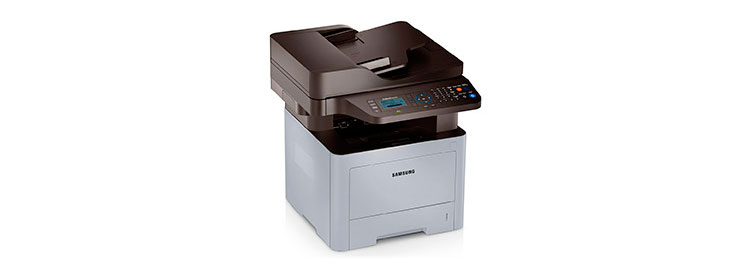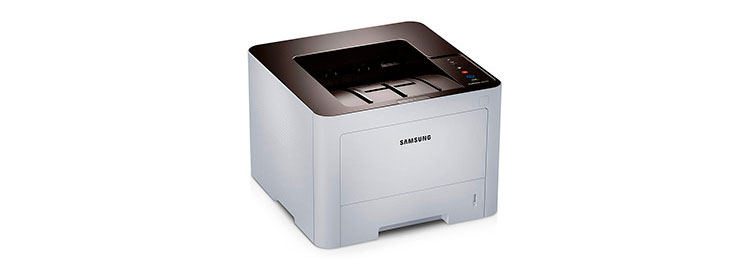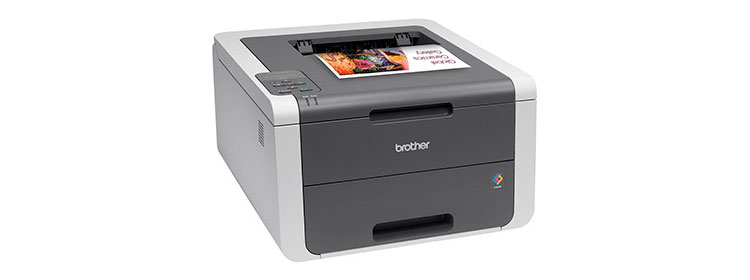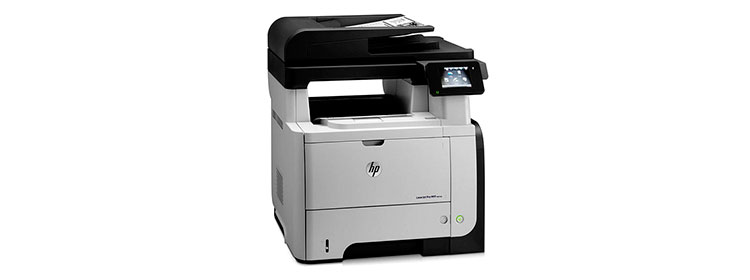BY TONY HOFFMAN
The HP LaserJet Enterprise 500 MFP M725dn inhabits a sparse niche: it’s a monochrome laser multifunction printer (MFP) that can print, scan, and copy at up to tabloid size. It’s a good option for businesses that need those capabilities, provided that they don’t plan to use the graphics they output for formal reports and the like.
The M725dn is enormous, measuring 24 by 24.2 by 25.6 inches (HWD) and weighing 119 pounds, so you’ll need at least two, and preferably three people to move it into place.
Features
This machine can print, copy, and scan (but not fax, which is available as a $300 option). It can scan to folder, email, or USB thumb drive (and print from a thumb drive as well). It has an 8-inch color touch screen and a built-in encrypted hard drive.
Standard paper capacity is 600 sheets, between two 250-sheet trays (one that fits tabloid-sized paper) and a 100-sheet multipurpose tray. The printer comes with an automatic duplexer for printing on both sides of a sheet of paper. The M725dn is built for heavy-duty printing, with a maximum monthly duty cycle of 200,000 pages and a recommended monthly duty cycle of up to 20,000 pages.
It scans at up to tabloid size from either its flatbed or automatic document feeder (ADF). The reversing ADF (which scans one side of a sheet, flips it over, and then scans the other side) can hold up to 100 sheets.
An optional 500-sheet paper tray ($359 direct) is available, as is a 500-sheet feeder with cabinet and stand ($599) and a 3 x 500-sheet feeder with cabinet and stand ($1,299), as is a 3,500-sheet feeder with cabinet and stand ($1,699). Maximum paper capacity is 4,600 sheets.
The M725dn is the base model in HP’s M725 series of mono laser MFPs. The M725f ($4,699) includes standard fax, plus a 500-sheet tray and a 500-sheet feeder and cabinet. The M725z ($5,599) includes fax, plus a 3 x 500-sheet feeder and stand, and a 500-sheet in-line stapler. The M725z+ ($6,931.33) includes fax, plus a 3,500-sheet feeder and stand, and the 500-sheet in-line stapler. There are other, minor differences between the models.
The M725dn offers USB and Ethernet (including Gigabit Ethernet) connectivity. I tested it over an Ethernet connection using a computer running Windows Vista.
original article
- OKI MC362w Review and Ratings(computershopper.com)
Print Speed
I timed the M725dn on our business applications suite (usingQualityLogic’s hardware and software for timing), at an effective 11.1 pages per minute (ppm). A good clip, though not particularly fast for a mono laser MFP, or for its 40 page-per-minute rated that’s based on printing text documents without graphics or photos—our test suite includes text pages, graphics pages, and pages with mixed content. It did beat the 9.9 ppm of its single-function counterpart, the HP Laserjet Enterprise M712dn $2,199.99 at HP, rated at the same 40 pages per minute.
Normally, in selecting comparison systems, they’re similar enough to the product under review that one can make a direct comparison. However, since we haven’t tested a tabloid-sized mono laser MFP in recent memory, we have no systems we’ve reviewed that are directly comparable, so I’ll have to use printers that have some characteristics in common though are far from exact matches. At the end of the review, though, I’ll try to tie some of these disparate systems together.
The Editors’ Choice Dell B3465dnf Mono Laser Multifunction Printer$1,279.99 at Dell Small Business, a letter- to legal-sized monochrome MFP rated at 50 pages per minute, tested at 15 ppm. I timed the Editors’ Choice Xerox Phaser 7100/N$1,305.99 at TheNerds.net, a tabloid-sized color laser single-function printer, rated at 30 pages per minute, at 7.6 ppm. (Granted, it was printing some of the pages in color, while the other printers mentioned here are strictly monochrome.)
Output Quality
The M725dn’s output quality is below par over all, with average text quality, slightly sub-par photos, and below-par graphics. Even average text quality for a laser is very good, though, suitable for any business use short of demanding desktop publishing applications that use very small fonts.
When it came to graphics, the M725dn did well in displaying thin lines. It did less well with backgrounds, with some showing mild blotchiness. A couple of illustrations showed faint, spurious shadows, and some showed mild banding (a regular pattern of faint striations). One figure contains a gradient between dark and light tones (which in the original are red); this printer showed the entire gradient as a uniform, darker gray. In another illustration, drop-out type against a dark background in a sidebar did not show up at all. You could probably use this printer for simple graphics for in-house use, but you’d do well to look them over closely before handing them out.
Photo quality is good enough for printing out recognizable images from Web pages. There was slight blotchiness in some dark solid areas, as well as mild banding and the ghost shadows I also saw in some graphics.
Running Costs
The M725dn has reasonably low running costs of 1.5 cents per page, in line with those of the single-function HP M712dn.
As we don’t have any directly comparable systems, we’ll first look at the M725dn strictly on its own merits. Considering that its ADF and flatbed can both handle tabloid-sized paper, and it can print at tabloid size, its price is within reason, especially considering that many HP mono MFPs limited to legal-size printing have cost more. Its price is also in line with the single-function HP M712dn. The M725dn has good paper capacity and prodigious paper-handling options. Its cost per page is competitive, and its speed is decent.
Although text is good enough for typical business uses, graphics and photo quality were both below par. This is less of a disadvantage for monochrome printers than for color models, but still it limits the M725dn’s usefulness in printing more formal documents. If this is not an issue, it’s a reasonable choice for an office that needs high-volume printing, scanning, and copying at up to tabloid size but doesn’t require color printing.
A single-function tabloid printer is another option, either a monochrome machine such as the HP M712dn or a color printer like the Xerox 7100/N. You could even add an MFP such as the Dell B3465dnf in addition to one of the aforementioned printers and still pay less than you would for the M725dn. The B3465dnf’s ADF and flatbed are limited to legal-sized pages, though; if you need tabloid-size scanning, you could combine a tabloid printer with a tabloid-size scanner such as the Xerox DocuMate 4830$2,029.00 at Scantastik.
For many companies, though, the HP LaserJet Enterprise MFP M725dn may be solution enough. It certainly has the ample paper capacity, low running costs, and MFP features befitting a device that prints, scans, and copies at tabloid size. It’s easy to recommend as such, as long as you don’t need to print in color or require graphics output of a quality suitable for formal reports and the like.
original article
- HP Laserjet Enterprise MFP M725dn(pcmag.com)



